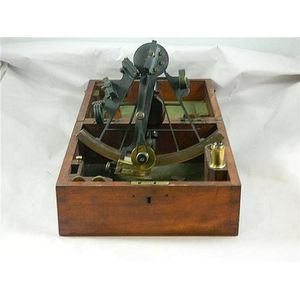Japanese Zodiac Ivory Bead String
You must be a subscriber, and be logged in to view price and dealer details.
Subscribe Now to view actual auction price for this item
When you subscribe, you have the option of setting the currency in which to display prices to $Au, $US, $NZ or Stg.
- Ivory - Ivory is a hard white material that comes from the tusks of elephants, mammoth, walrus and boar, or from the teeth of hippopotamus and whales. The ivory from the African elephant is the most prized source of ivory. Although the mammoth is extinct, tusks are still being unearthed in Russia and offered for sale.
Ivory has been used since the earliest times as a material for sculpture of small items, both in Europe and the east, principally China and Japan.
In Asia ivory has been carved for netsuke, seals, okimono, card cases, fan supports, animals and other figures and even as carved tusks.
In the last 200 years in Europe ivory has been used to carve figures, for elaborate tankards, snuff boxes, cane handles, embroidery and sewing accessories, in jewellery and as inlay on furniture. Its more practical uses include being used for billiard balls, buttons, and a veneers on the top of piano keys.
The use and trade of elephant ivory have become controversial because they have contributed to Due to the decline in elephant populations because of the trade in ivory, the Asian elephant was placed on Appendix One of the Convention on International Trade in Endangered Species (CITES), in 1975, and in January 1990, the African elephant was similarly listed. Under Appendix One, international trade in Asian or African elephant ivory between member countries is forbidden. Unlike trade in elephant tusks, trade in mammoth tusks is legal.
Since the invention of plastics, there have been many attempts to create an artificial ivory - Ojime - An ojime is a small decorative bead that is used as a sliding bead or toggle on the cord of a traditional Japanese netsuke. The netsuke is a small sculptural object that was used to fasten a container, such as a box or pouch, to the obi (sash) worn with a traditional Japanese kimono.
The ojime was used to adjust the length of the cord or to secure the container in place. Ojime beads were typically made from a variety of materials such as wood, ivory, bone, and stone. They were often elaborately carved with intricate designs or decorated with colourful lacquer, enamel, or inlay work.
Visually similar items

A green jade bi disc in the form of Kylin dragons chasing a flaming pearl. Purchased Goodmans Auction May 2002 catalogue item number 494 16 cm diameter

A Czech malachite glass bowl. By Heinrich Hoffmann. Height 8 cm

A good Tokyo school ivory and shibayama netsuke of a young boy, late Meiji period, seated pulling a face whilst hiding a hooked tool behind his back, his tongue articulates to poke out, his costume inlaid with decorative details in various materials, the h

A mid Victorian casted sextant retailed by Seagrove of Portsmouth, owned by Admiral HWS Gibson RN., Commander of the Australian Coastal Fleet from 1891-1894
